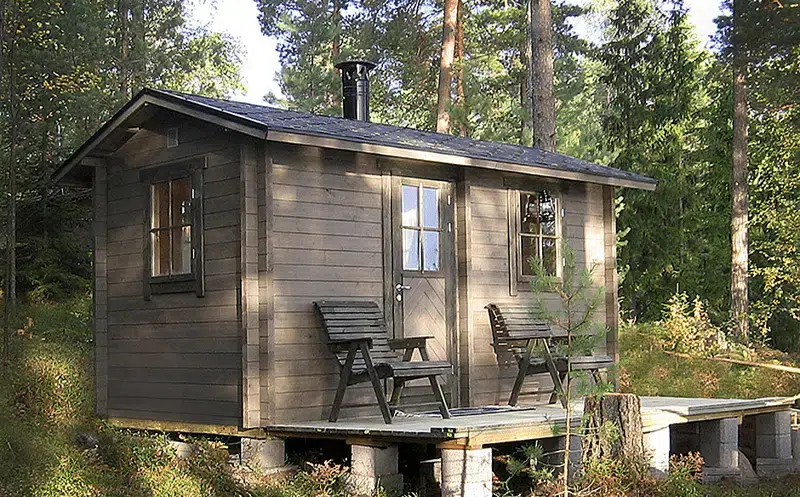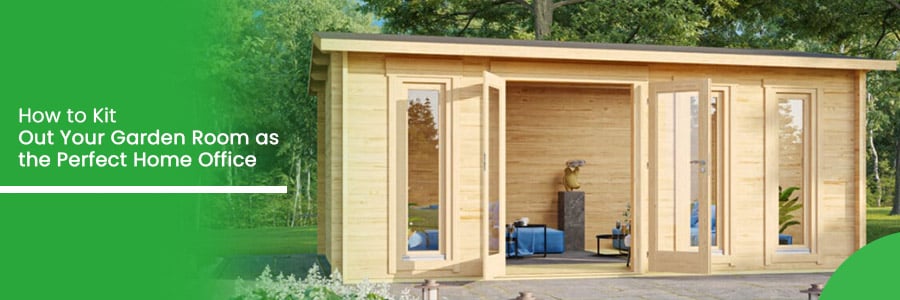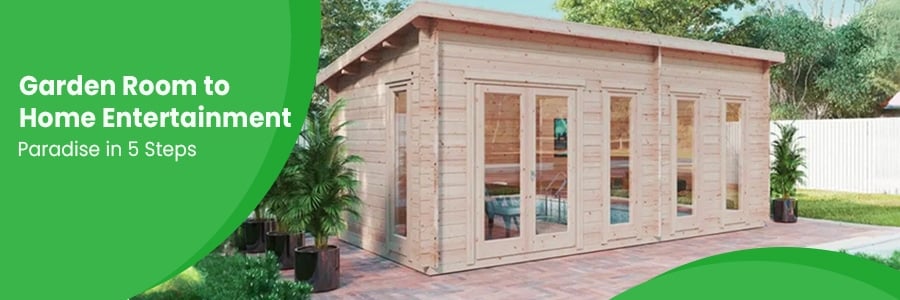Seed Production at the Garden Log Cabin
13.10.2017
After so many articles about woodworking, insulating, heating and maintenance of your garden log cabin in the last weeks, we feel it is time for a gardening topic again. Of course, with the first frosts approaching, the gardening season has lost its intensity a bit. Most harvests should be in already and stored for drying at the garden log cabin, be bottled, deep-frozen, or they have already found their way through the kitchen into our stomachs.
The rest of the harvest of beans and peas should be finished, roots left in the ground to rot as they have bound nitrogen from the atmosphere. The first beds for early next year can be prepared now, manure or kitchen waste can be brought out to rot over winter and provide humus for next year’s crops.
Squashes and pumpkins should be harvested well before the first night frosts because they will turn mushy if they freeze outside, green tomatoes or peppers should be hung upside down indoors or inside the garden shed or garden log cabin if there is a frost guard installed in it.
Cauliflower could still stay outside, but it would be better to protect it from possible frosts by rapping the outer leaves around them or by covering them with a fleece.
Now is also the right time to plant autumn garlic bulbs and autumn onion sets for next summer.
Well, all in all, the scope of work around the garden log cabin usually gets smaller from now on, and that’s why there might be some time to think about producing your own seeds for next year.
Of course, we don’t want to talk about industrial agricultural seed production as a business to sell the seeds, but it might be worth a thought to get used to producing at least some of the seeds yourself.
Organic gardening at the garden log cabin
Breeding vegetables has brought good progress towards yield, vitality, and resistance to pests in many crops. Most of the times, however, this is nowadays achieved by cross-breeding two pure-bred lines in a way that their features compliment each other to a perfect, large and vital product. This is called hybrid-breeding and the seeds that you buy every spring in the store are usually so-called F1-hybrids.
The catch is, that you cannot use seeds from these hybrids because they will spit up into the pure-bred lines in the next (F2) Generation. For some more progressed products, so-called “suicide genes” will be activated if you try to plant seeds from these hybrids so that the resulting plant will not just be tiny and weak as usual but surely die off at a certain stage of their development. That way the seed industry makes sure to have you as a customer every year.
More and more organic gardeners ask themselves what would happen if there would be no seeds for their favourite variety next year. Or what if the seed industry being already bought off by the agrochemical industry would just sell seeds of plants that need their other products, like herbicides, pesticides, fungicides or special kinds of chemical fertilizer to give a good harvest? Or will we soon have to pay a license fee for growing patented crops around our garden log cabins?
Gardening with true-to-seed – or heirloom varieties at the garden log cabin
Even though many old heirloom varieties have already vanished, there is hope as many gardeners, companies, or associations have started actively growing, propagating, and conserving these varieties which often are also local specialities, bred for generations, perfectly adapted to a certain local soil, microclimate and growing method.
If you are interested to dedicate at least some of the beds around your garden log cabin to growing these old true-to-seed heirloom varieties, you can find many suppliers of seeds on the internet as well as instructions on how to grow seeds.
For many crops, this is not easy. For example is it quite a task to let some nice and heavy heads of cabbage blossom. On the other hand, there are vegetables that are much better suited for beginners of seed production, like for example tomatoes, cauliflower, broccoli, radishes, spinach, or generally all vegetables that usually form flowers or fruits.
Many gardeners will already have made the annoying experience to look for the salad or for the small radishes and found them shooting inflorescences making them unfit for consumption. What if you grow heirloom varieties and select the biggest ones and those that grow biggest without shooting for propagation?
Breeding your own seeds around the garden log cabin might lead you more and more to a selection of varieties optimized to your very own style of gardening, your soil, your fertilizers, and your climate.
Tomatoes are a favourite vegetable to start growing seeds at your garden log cabin
Of course, tomatoes have their seeds already in them and thus are a very easy crop to start making your first experiences with your own seed production at the garden log cabin.
Not only do you kind of harvest the seeds together with the product, but you can even take the seeds out of your chosen product and still cut it on a slice of toast to verify your choice with respect to the taste. Moreover, there is a huge range of different heirloom varieties to be chosen from on the internet; probably just because propagating seeds is so easy.
You even don’t necessarily need to wait until the chosen fruit is deeply ripe and thus probably less tasty. In most cases, seeds from normally harvested tomatoes will do the trick and sprout.
However, tomatoes have one peculiarity: the seeds are embedded in a kind of gelatinous substance which would inhibit sprouting. This way the tomatoes manage that her seeds don’t start sprouting while still in the fruit. So the seeds need to be cleaned thoroughly, or they should be mixed with a bit of sugar-water and fermented. The yeast will eat the gel away and leave a seed that will sprout if planted. Just let the glass with the seed and sugar-water mixture stand in the garden log cabin or inside for three to five days until you can smell the alcohol. Then filter the seeds out, wash them, dry them and store them some place cool and dry.
So, as much as it is rewarding and fun to start producing seeds of your very own selected vegetable lines at the garden log cabin, there are still some little tricks to be known, but all in all, the feeling to grow your very first cauliflower/broccoli hybrid or your very own line of salads make the try worthwhile.
Categories:
BlogWant to discuss over phone. Let us call back to you
If you need any additional info regarding any product, please fill in the below form and we will get back to you, usually the same or next working day.
Have any questions regarding some product?
If you need any additional info regarding any product, please send us your questions.



